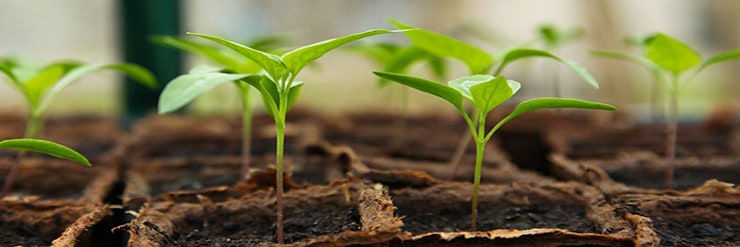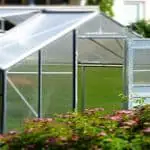If you’ve ever grown plants, you know that they grow faster in a greenhouse than outside. But why is that? What’s the difference between growing plants inside and outside? You might be surprised just how effective a little greenhouse is at growing your plants. So, why do plants grow faster In a Greenhouse than outside?
A greenhouse allows for the control of several environmental factors which can impact plant growth, including water, light, and ventilation. In addition, a greenhouse protects plants from pests and disease, which can lead to healthier plants with a higher yield.
In this blog post, we’ll explore the benefits of growing plants in a greenhouse and find out why they grow faster in a greenhouse than outside. We’ll also look at some of the factors that affect plant growth, so you can make sure your plants are healthy and thriving!
- Why Do Plants Grow Faster In A Greenhouse Than Outside
- How does a greenhouse help plants grow
- How much warmer is a greenhouse than outside
- Is it better to grow vegetables in a greenhouse or outside
- What are the advantages of using a greenhouse to grow plants
- Greenhouse vs direct sunlight for plants growth
- Greenhouses support plants for optimal growth
- A greenhouse offers everything plants need to flurish
- Greenhouses provide ideal conditions for plant growth
- Greenhouses can control the humidity to help plants grow
- Greenhouses can control the temperature to help plants grow
- In a Greenhouse, you can control the soil
- In a Greenhouse, you can control the water
- In a Greenhouse, you can control the (Sun)light
- In a Greenhouse, you can control the ventilation
- In a Greenhouse, you can control the pests without
- Growing in a greenhouse will produce a better yield and healthier plants.
- Conclusion
Why Do Plants Grow Faster In A Greenhouse Than Outside
Temperature is one of the most important factors affecting plant growth. Greenhouses provide a more controlled environment than growing plants outdoors, so plants often grow faster in greenhouses.
In addition to temperature, greenhouses can also control other factors such as humidity and light exposure, which further helps plants to grow faster.
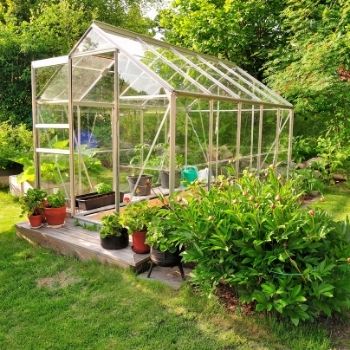
Apart from providing a more stable environment, greenhouses also protect plants from bad weather and pests.
This means that plants are less likely to experience setbacks that can slow down their growth. All of these factors combine to create conditions that are ideal for plant growth, resulting in faster growth rates for greenhouse-grown plants.
How does a greenhouse help plants grow
Greenhouses create a micro-climate by trapping heat inside. By doing so, greenhouses have the ability to grow plants that would not normally be able to survive in their local climate. Additionally, greenhouses can protect plants from extreme weather conditions, pests, and diseases.
A greenhouse helps plants grow by providing a warm, controlled environment for them to thrive. By trapping heat inside the greenhouse, it creates a microclimate that is ideal for many plant species.
This allows gardeners to grow plants that would not normally be able to survive in their local climate.
Additionally, greenhouses can protect plants from extreme weather conditions, pests, and diseases. By
Creating a controlled environment, greenhouses allow gardeners to have more control over the growing conditions of their plants.
Overall, a greenhouse is beneficial for plant growth because it provides a stable and consistent environment. By keeping plants warm and sheltered from the elements, greenhouses give plants the best chance to grow and thrive.
How much warmer is a greenhouse than outside
Greenhouses are able to maintain a more constant temperature because they are enclosed. The temperature difference during the winter can be 20-30 degrees Fahrenheit higher compared to the outside temperature. In summer, the temperature difference can be as much as 40-50 degrees Fahrenheit

How much warmer is a greenhouse than the outside depends on a lot of different variables, such as the sun’s position, the orientation of the greenhouse glass to the sun, and the temperature outside of the greenhouse, to name a few.
If you took two locations that are geographically distant but that have a similarly hot day in terms of sun hours, humidity, and UV index you would most likely get different results.
But to give a rough estimate, the difference between the outside temperature compared to the temperature inside a greenhouse during winter could be a difference of between 20-30 degrees Fahrenheit.
The difference between the outside temperature compared to the temperature inside a greenhouse during Summer could be a difference of between 40-50 degrees Fahrenheit.
The average difference in temperature between a greenhouse and the surrounding air can vary depending on the type of greenhouse and how well it is insulated.
A greenhouse works by trapping heat from the sun inside. The sun’s energy hits the earth’s surface and is absorbed as heat. Greenhouses are built to allow this heat to enter, but not escape back out. This trapped heat makes the air inside the greenhouse much warmer than the air outside.
Is it better to grow vegetables in a greenhouse or outside
It is typically better to grow vegetables in a greenhouse. This is because greenhouses provide an environment that can be more easily controlled than the outdoors.
For example, greenhouses can be used to regulate temperature, humidity, and light exposure, all of which can impact plant growth.
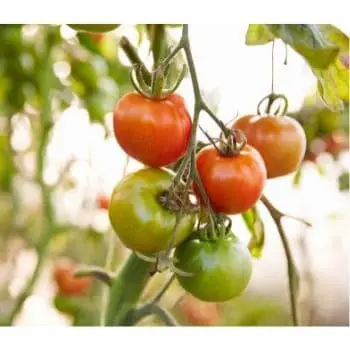
Additionally, growing plants in a greenhouse can help protect them from pests and diseases.
However, it is important to note that each type of vegetable has different needs, so it is best to research the specific requirements of the plants you wish to grow.
Related article:
What are the advantages of using a greenhouse to grow plants
Because of the protection and optimal growing conditions plants will usually grow much faster and yeild more fruit than if they grow naturally.
One of the main advantages of using a greenhouse to grow plants is that it can provide an environment that is more easily controlled than the outdoors.
Greenhouses can be used to regulate temperature, humidity, and light exposure, all of which can impact plant growth.
Additionally, growing plants in a greenhouse can help protect them from pests and diseases.
It is important to note that each type of vegetable has different needs, so it is best to research the specific requirements of the plants you wish to grow.
Greenhouse vs direct sunlight for plants growth
There are pros and cons to growing plants in a greenhouse versus direct sunlight.
One of the main benefits of using a greenhouse is that it can provide protection from the elements, including strong winds, heavy rains, and even snow. This can be especially beneficial for delicate plants or those that are just starting to grow.
Greenhouses can also help to regulate temperature, which can be beneficial for plants that require specific conditions in order to thrive.
However, greenhouses can also be quite expensive to construct and maintain, and they may not be practical for everyone.
Additionally, some plants actually prefer direct sunlight and may not do as well in a greenhouse environment.
Ultimately, it is up to the gardener to decide whether a greenhouse or direct sunlight is best for their plants.
Greenhouses support plants for optimal growth
Greenhouses offer many benefits for your plant’s growth.
A greenhouse offers everything plants need to flurish
Just like people, plants require the basics for survival: food, water, and air. These three requirements are the same for nearly all forms of life.
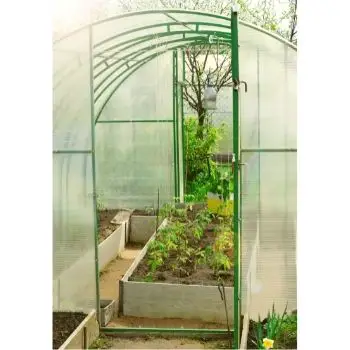
Plants get their food from sunlight through photosynthesis, their water from your watering cans, and their air from the carbon dioxide found throughout the atmosphere.
And like people, plants need more than just the basics; they also require shelter, suitable warmth, and the right level of humidity for growth.
This is where a greenhouse comes in. Having four walls and a roof over the plants prevents many negative weather conditions from affecting your crops. A fully-fledged greenhouse does this and more. It discourages the negatives and embraces the ideals.
Related article:
Greenhouses provide ideal conditions for plant growth
A greenhouse offers what the outside cannot, a controlled environment.
Plants like lettuce and garden beans take around two months to grow, while pumpkins and potatoes take their time, requiring four months for growth and harvest.
A lot can happen during the months when the plant is still growing: A bad rainstorm, a cold day in spring, or a deer walking through the garden, well. It’s not quite ideal.
Having your plants grow in this enclosed area, the greenhouse, allows them to grow in peak condition. Controlled water and soil levels, a consistent temperature, and no pesty animals chomping on your lettuce add up and allow the plant to focus on its growth, so the plant can use its energy towards production rather than protection.
All these benefits a greenhouse provide are the reasons why plants grow faster in a greenhouse than outside, not only do they grow faster but also healthier.
Greenhouses can control the humidity to help plants grow

The majority of plants, crops, or flowering plants, require between 50-70 percent humidity in the air.
This can be achieved through proper heating, ventilation, and temperature systems.
Setting up fans, vents, humidity controllers, and such are important ways to keep the greenhouse’s humidity in check.
Greenhouses can control the temperature to help plants grow
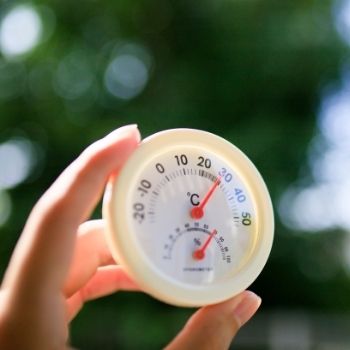
If you’re growing plants within a greenhouse, odds are you’ll want to keep it nice and toasty inside. The ideal temperature within a greenhouse is around 80 degrees Fahrenheit.
The heat from the sun’s rays will do a fine job at heating the greenhouse. During sunny days or an extra hot stretch in the summer months, regulating the greenhouse’s internal temperature is especially important. A ventilation and fan system can be built to do just that.
In a Greenhouse, you can control the soil
Just like plants from the outside world, plants grown in a greenhouse require soil. It allows the plant access to the nutrients within the soil, such as nitrogen, phosphorus, and potassium, three important nutrients just about all plants require.
Different plants have different ratio needs of nitrogen, phosphorus, and potassium, so soil-based mixes consisting of compost and potting mix are key to a plant’s growth.
In a Greenhouse, you can control the water
A plant needs water in the same way a person needs water – without the right amount it will not grow properly. The chemical equation for photosynthesis – a plant’s way of making its food – involves air, water, and light energy. Too much water will drown a plant, too little, and photosynthesis will not occur to its full extent.
While plenty of plants can grow on their own in the wild, you’re looking for your homegrown plants to flourish. A well-controlled watering system in a greenhouse will cut back on the time it takes to hand-water each individual plant. Sprinkler systems and an irrigation method would work, depending on the space you have to work with.
In a Greenhouse, you can control the (Sun)light
Plants require light energy for photosynthesis to occur. However, sunlight is not a constant throughout the day and year. The winter months have less sunlight than the non-winter months, so light is a hot commodity for your year-round greenhouse plants.
Setting up an artificial light system, called grow lights, for your plants is a great solution to this dark problem.
Often taking the form of LED lights, which can shine the right amoun of light on the plants to help them grow.
In a Greenhouse, you can control the ventilation
As plants inhale carbon dioxide and exhale oxygen, they naturally produce moisture with it. This could end up producing mold which is harmful to your plants.
Having a well-ventilated greenhouse will keep air flowing and prevent moisture buildup.
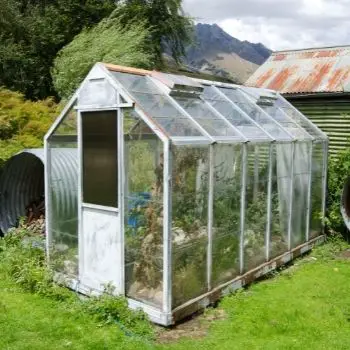
By keeping the air flowing, prevents the air inside the greenhouse from overheating and damaging the plants. Just like people, plants can get heatstroke!
Ventilation is incredibly important for the care of your plants within a greenhouse. Non-flowing air is the perfect condition for plant-based pathogens and fungi to thrive. By having the right level of airflow, clean air can continue to enter the greenhouse, discouraging plant disease. Fresh air isn’t just combative against disease, it’s also a requirement for plant growth.
Plants need fresh air, they aren’t able to survive on stale, stagnant air. As air is needed for both the plant’s carbon dioxide requirements and photosynthesis, this makes ventilation very important for your plants’ growth.
In a Greenhouse, you can control the pests without
In a Greenhouse, you can control the pests without the use of pesticides, which can be harmful to your plants.
A plant’s ability to ward off pests and diseases is increased when they are in the safety of a greenhouse.
Growing in a greenhouse will produce a better yield and healthier plants.
Greenhouses provide an optimal environment for temperature, humidity, and light, which can be controlled by the grower. Greenhouses also help to protect your plants from pests and diseases.
One of the main benefits of growing in a greenhouse is that you can control the environment. By controlling the temperature, humidity, and light, you can create the perfect conditions for your plants to thrive.
Greenhouses also help to protect your plants from pests and diseases.
Growing in a greenhouse is the best way to ensure a high yield and healthy plants.
Conclusion
So, why do plants grow faster in a greenhouse than outside? A greenhouse is a perfect place for plant growth to work, as it provides them with control over their environment.
What’s more, plants are protected from pests and diseases when they’re grown in a greenhouse. If you take care of your plants properly by providing them with optimal temperature, humidity, and light conditions; while also protecting them from pests and diseases, then you will be rewarded with a high yield and healthy plants.

